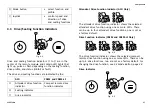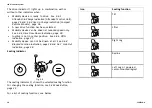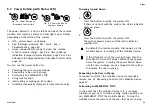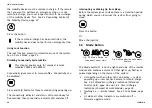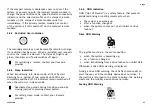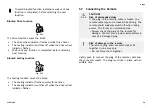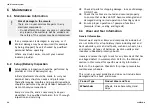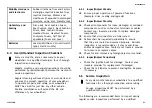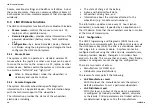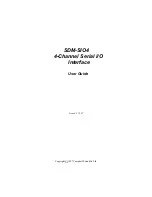
5.3 Power Button (with Status LED)
Fig. 5-1 Power Button on
Attendant Control Unit
Fig. 5-2 Power Button on
Compact Remote
The power button
A
is on the left-hand side of the remote
module, and contains a status LED that lights up or flashes
depending on the status of the system:
•
OFF—system down or sleeping
•
Red (flashing)—powered ON - fault. See
.
•
Green—powered ON, ready to drive, the remote
is the remote-in-charge. See
Indication (Compact Remote Module), page 26
or
Attendant-in-Charge Indication (Attendant Control Unit),
page 26
.
You can use the power button for:
•
Powering the system up and down
•
Requesting to be user-in-charge
•
Performing an EMERGENCY STOP
•
Using lock function
•
Interrupting or waking up from sleep
•
Disabling connectivity (compact remote module only)
Powering Up and Down
1.
Press the button to switch the system ON.
If there is no fault with the system, the status indicator
lights up green.
2.
Press the button to switch the system OFF.
The system powers down and the status indicator
switches OFF.
By default, the remote module, that powers up the
mobility device, is in-charge of the mobility device.
If the attendant is not the user-in-charge, then the
attendant control unit’s power button cannot power
down the system. Pressing the power button when
not the user-in-charge, sends a request to the system
to become the user-in-charge.
Requesting to be User-in-Charge
To request control of the mobility device via secondary
remote, see
5.1 Requesting Control of the Mobility Device,
.
Performing an EMERGENCY STOP
In the event that the mobility device is in a runaway
situation or you want to stop a seating motion quickly, you
can EMERGENCY STOP the mobility device. To stop the
mobility device the remote of the user that wants to stop
1195718-A
23
Содержание LINX ACU
Страница 1: ......









